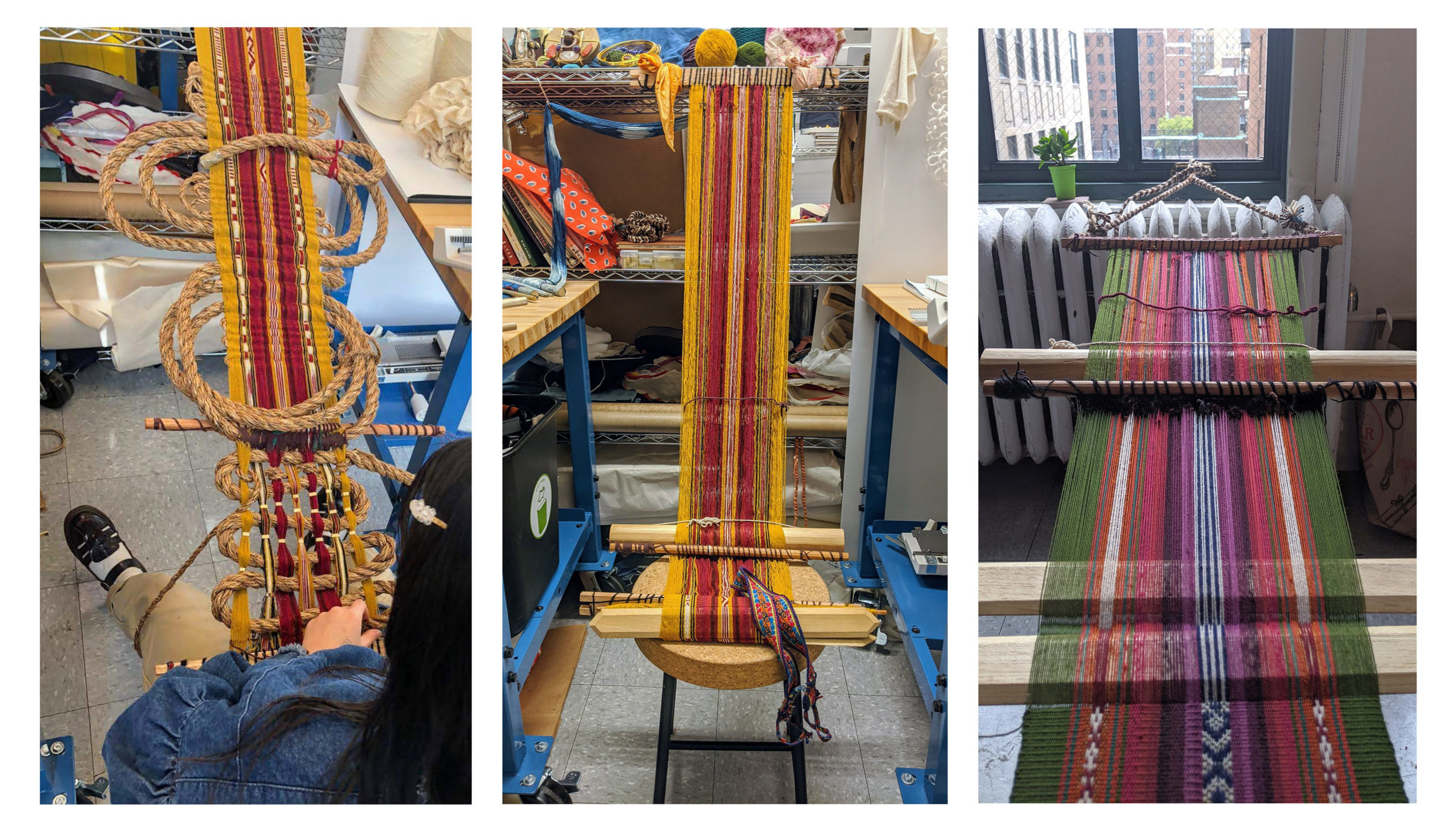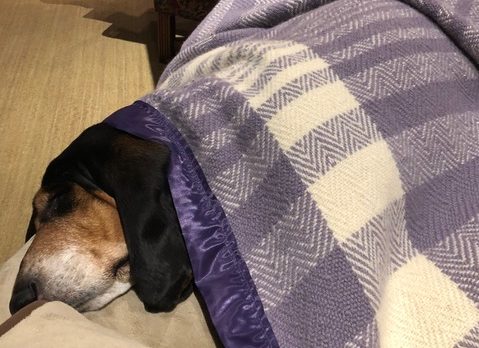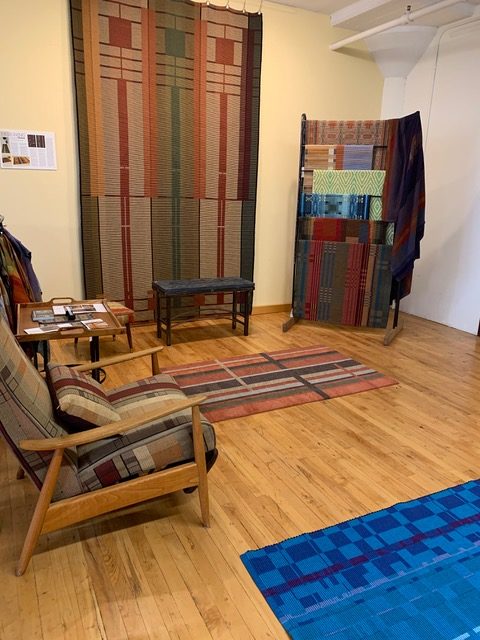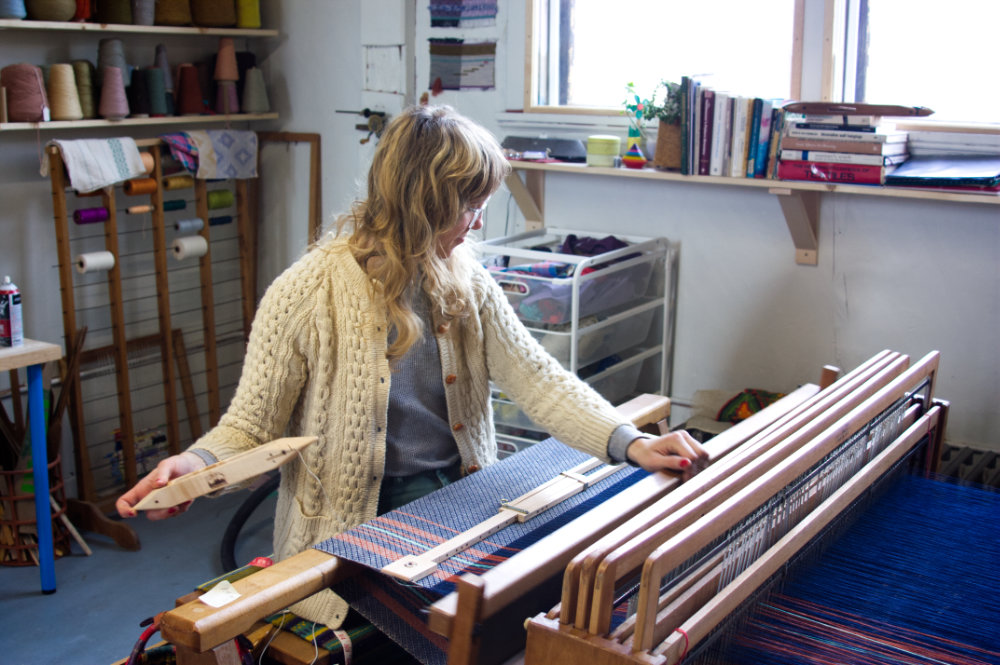
WGM: Tell us about yourself. Are you a spinner? Weaver? Dyer? More?
CN: I am a painter turned weaver obsessed with color and pattern interactions. I am excited about manipulating traditional weaving patterns through repetition, careful editing, and experimental proportions to contemporize traditional woven work. I make and sell handwoven items under my business CAN Goods.
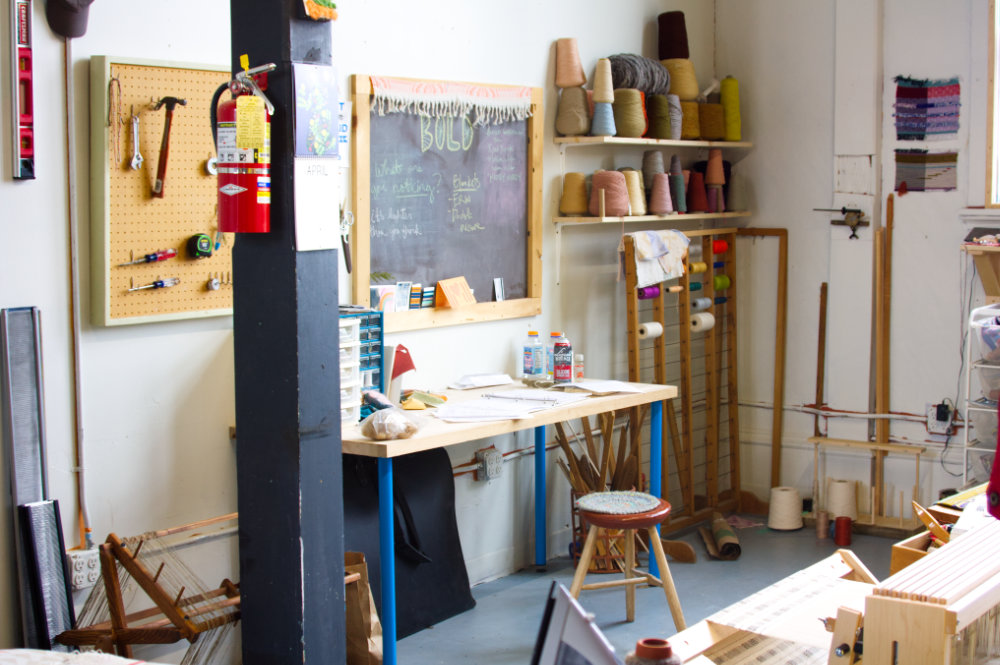
WGM: Tell us about your studio, where are you located and what is your space like? What tools, processes, materials and techniques are you using in your practice right now?
CN: I am currently an artisan in residence at North House Folk School. As part of the program, residents are given a studio space in an old Lutheran Church owned by artist, Betsy Bowen. The building exudes creative energy. Betsy makes and sells her beautiful woodcut prints in the bottom level. Crosby Bakery shares the main level, pumping out the most delicious baked goods (and making our studio always smell of fresh bread), and the Artisan Development Program residents share the main floor. The large church windows offer incredible light. It’s such a gift. The space has been many things: a Norwegian Lutheran church, a public school classrooms, a community theatre, a woodworking shop. I love working in it, knowing what a special and inspiring place it was for so many people before me.
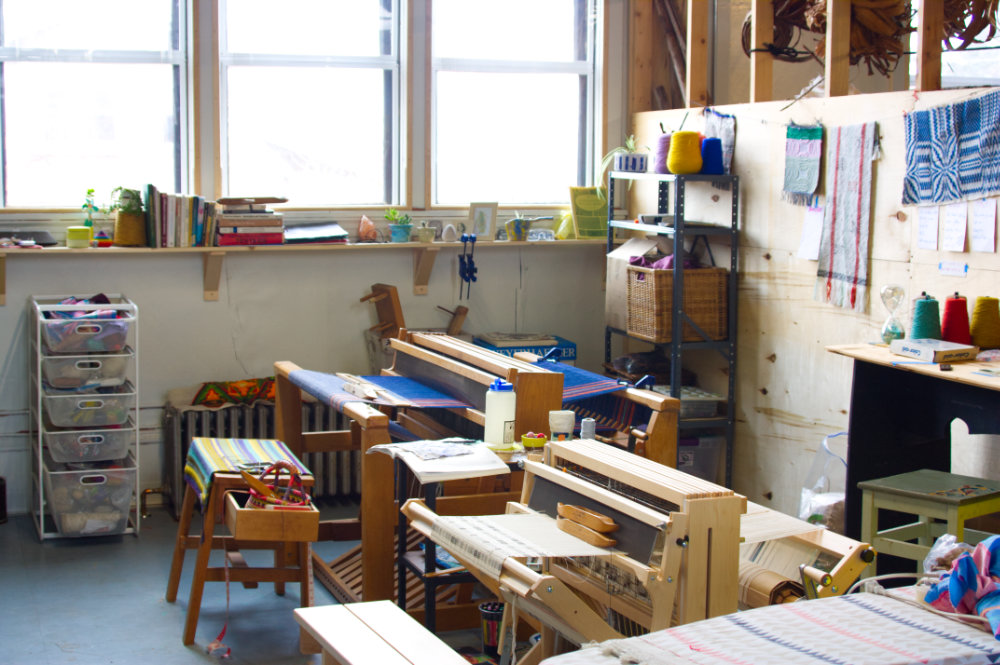
I am weaving away, exploring different weave structures – but am also excited about incorporating new practices. I plan to do a lot of natural dyeing this summer with foraged materials from the boreal forest and the town of Grand Marais. I’m currently soaking some birch bark (pink dye) and have been taking walks to collect dandelion flower heads (bright yellow dye).
I also have been investigating and digging deeper into bast fibers — strong, flexible fibers made from the inner bark of plants. I am preparing to plant a 4×18’ bed of textile flax with seed given to me by Andrea Mycklebust. I will go through the whole process of growing, retting, scutching, breaking, hackling, and spinning. I also was given a ton of beautifully processed basswood bark by John Zazada. The material is so strong and smooth, and I can’t wait to see how it weaves up as weft on a floor loom. I’m thinking it could make great doormats or sturdy placemats. I may try plying some for warp as well.
So, needless to say, lots going on!
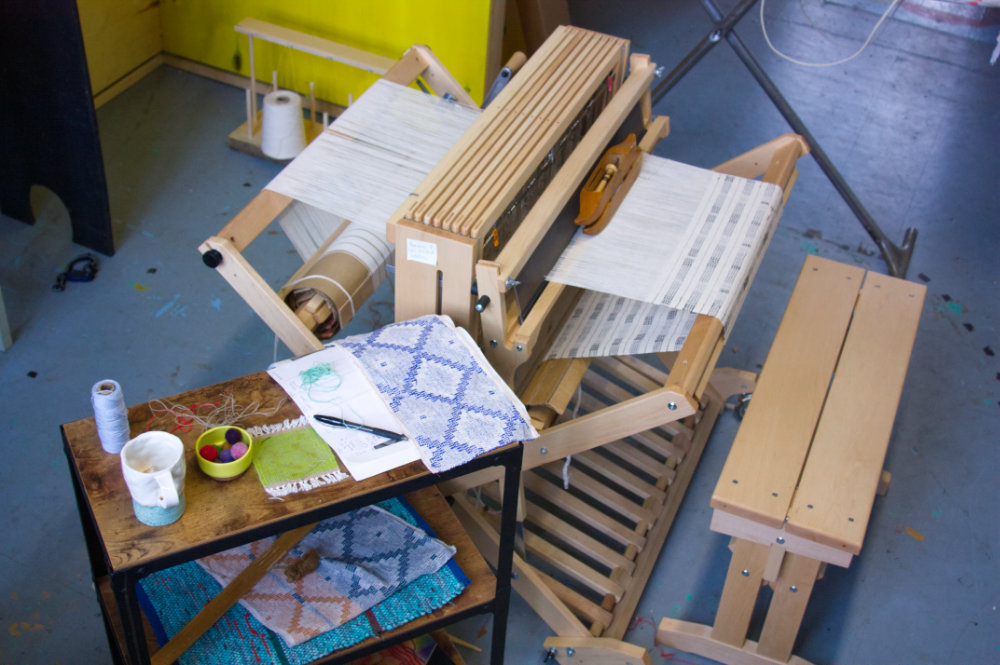
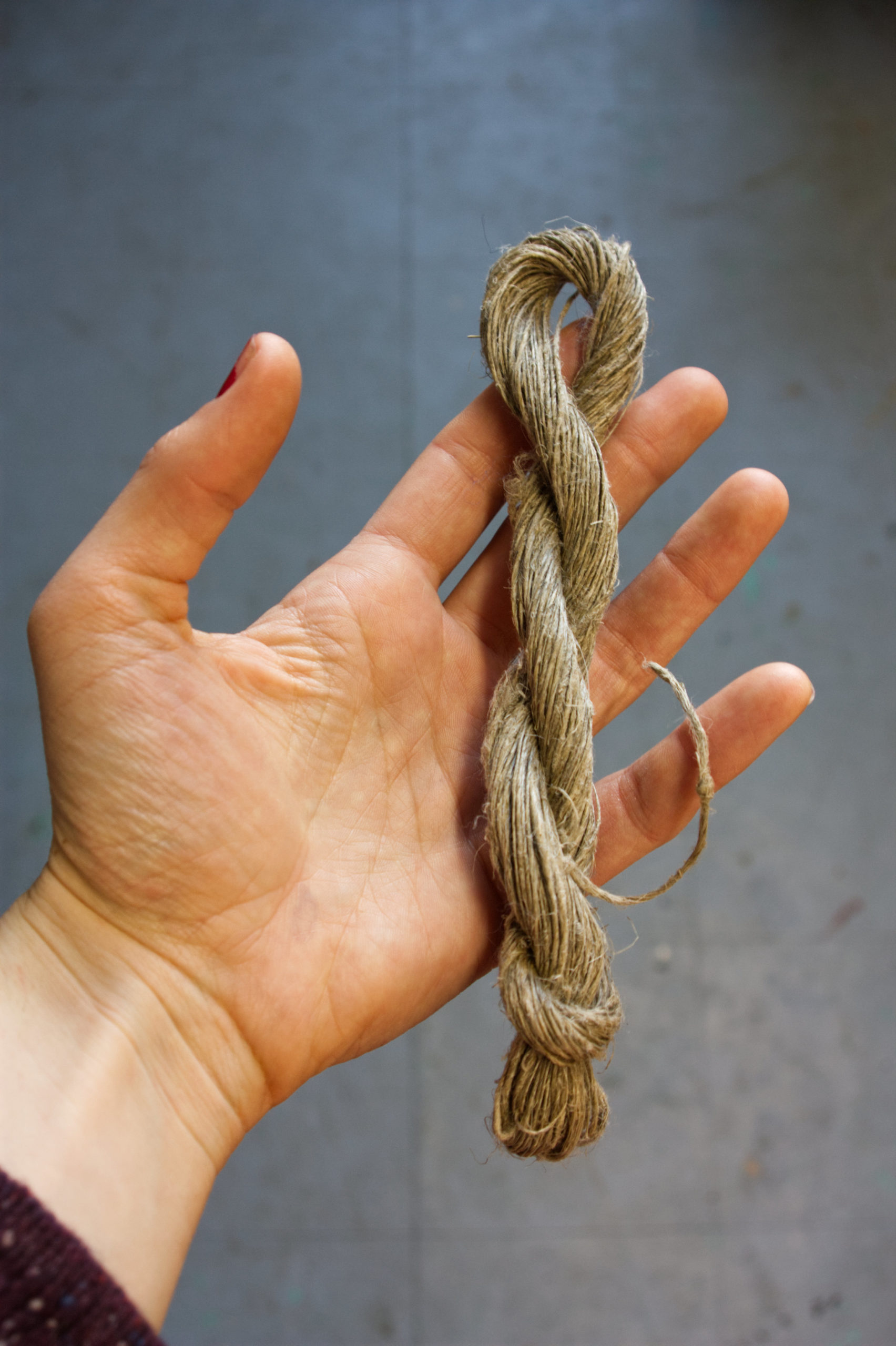
WGM: What are you making? What materials are you working with? What processes are you using? What loom do you have warped right now?
CN: I weave on two looms in my studio – the first is my personal loom, an 8 shaft, 14 treadle Gilmore jack loom 47” weaving width. North House Folk School just began a floor loom weaving program this past year, and purchased 8 Schacht Baby Wolfs, so I am borrowing one of those to work on as well.
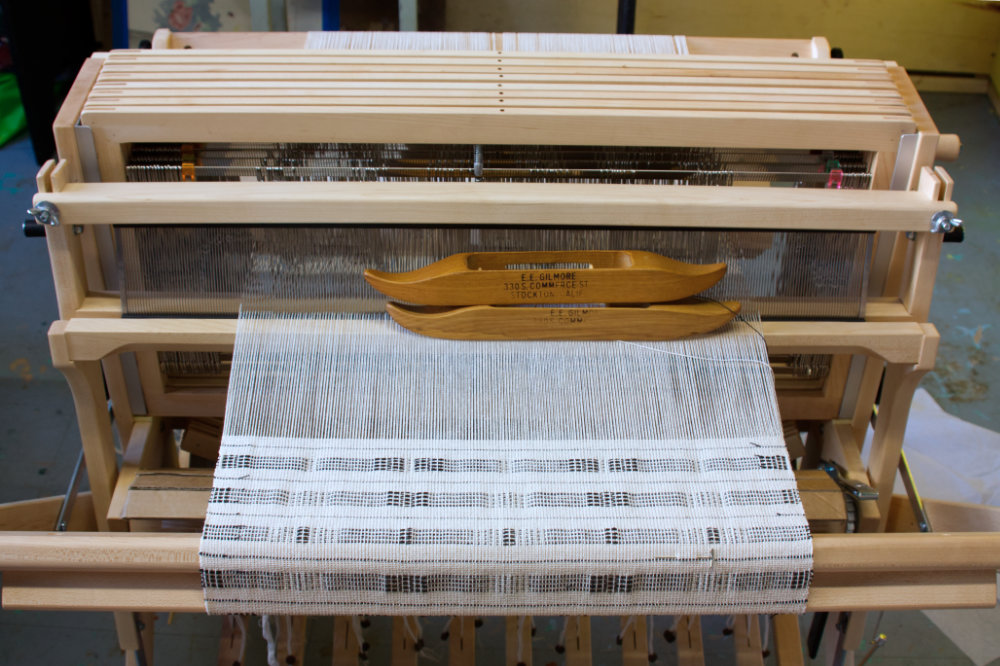
Lately I have been making block crackle weave towels from a 10/2 cotton warp and tabby, and 8/2 cotton pattern thread or linen. I have LOVED my experimentation with this weave structure, because it holds so much ability for interesting pattern work, but also creates a strong and stable cloth because it has a tiedown warp thread every 3 threads.
I also just pulled 3 generously sized cottolin/linen bath towels off the loom in a plaited twill pattern. These were really fun to create, and I have been using one of them. It makes me excited to shower! The linen is so absorbent, and the fabric is structural and tactile. I look forward to seeing the linen change over time on such a large textile.
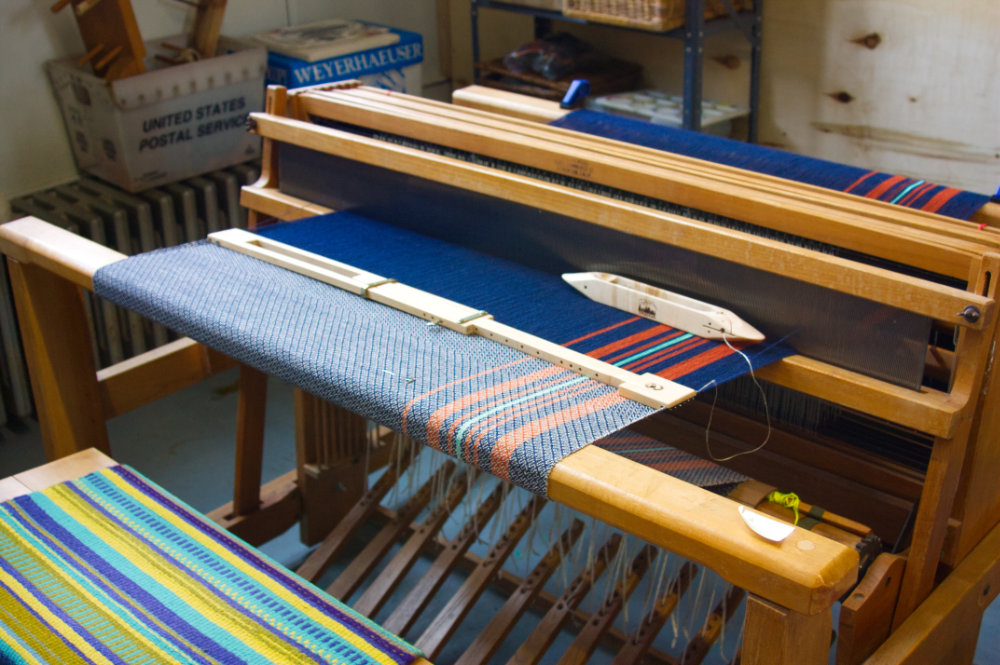
WGM: Tell us about your favorite tools?
CN: My favorite tool is not actually a weaving tool, but a timekeeping tool! I use the most beautiful hourglass often as I work. I like to time my work, either to push through when I’m feeling distracted or want to give up, or remind myself to get up and stretch when I’m in the zone and could work for hours without stopping. I used to set timers for myself on my phone, but I’m trying to get away from using my phone for everything. Timing with an hourglass is so magical – although not always time reliable! The time it takes for all the sand to pass through can vary from 30 minutes to 60 minutes in different conditions! But I like that. It reminds me that time can have spaciousness and flexibility.

WGM: How do you use your space? Do you share it?
CN: As mentioned above, I work with 3 other people in a large studio located in an old Lutheran church. The Artisan Development Program we are a part of consists of a good amount of travel time, mentorship, and teaching in addition to studio access. However at this moment all of that has been put on hold with the pandemic. So, we are all working away in the studio! I share studio space with Josh Tolkan, a boatbuilder, Elise Kyllo, a felter, and Emily Derke, a basketmaker and hide tanner. It’s been really lovely to witness the experimentation, expertise, and excitement of these 3 other artists pursuing their passion. In one corner of the studio, Emily’s tanning whitefish skins, while in another Elise is working on colorful and dimensional felted bags, and in the other corner Josh is varnishing a sleek kayak paddle. I’m grateful to learn and gain inspiration across disciplines.


WGM: What’s been on the speaker while you work?
CN: Fiona Apple’s new album “Fetch the Bolt Cutters” is a daily listen for me right now. It’s a really powerful album.
I’ve also been listening to The Golden Thread on Audible, and am enjoying the Rabbit Hole podcast by New York Times about how the internet is changing our brains.
Connect:
Can-goods.com
IG: @christinenovotny

